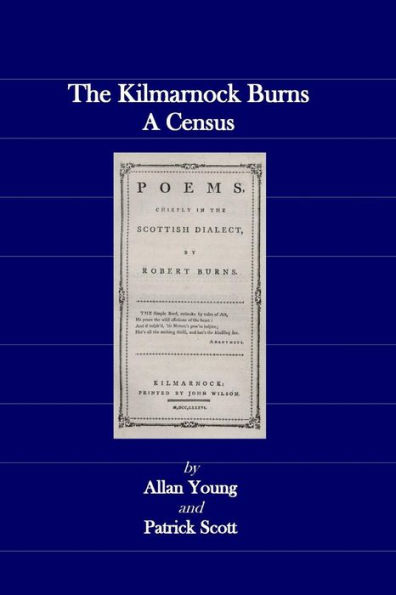The Kilmarnock Burns: A Census
This study is the first modern attempt to track down how many copies of Robert Burns's first book still survive. Burns's Poems, Chiefly in the Scottish Dialect (1786), has long been recognized as one of the world's great books. The 612 copies that were printed in the summer of 1786 by a local printer, John Wilson, in Kilmarnock, Scotland, sold out almost immediately and launched Burns's worldwide reputation as a poet. In time copies of the Kilmarnock, often splendidly rebound to indicate its importance and its growing monetary value, became prized by book collectors on both sides of the Atlantic. The study describes the present appearance of each of the surviving copies, including any inscriptions, and traces, as far as possible, their previous ownership and its significance. In addition, drawing on print and digital evidence for copies previously reported in exhibitions, auctions, bookseller catalogues, and newspapers, the study documents the larger story of public interest in Burns and Burns collecting from the early nineteenth-century to the present day.The book opens with an introduction, by Allan Young, telling how he became interested in the topic and approached the research, summarizing the findings, and listing the most important unlocated copies, which is followed by Patrick Scott's account of how the Kilmarnock was published and how it became a collector's item.
1132090665
The Kilmarnock Burns: A Census
This study is the first modern attempt to track down how many copies of Robert Burns's first book still survive. Burns's Poems, Chiefly in the Scottish Dialect (1786), has long been recognized as one of the world's great books. The 612 copies that were printed in the summer of 1786 by a local printer, John Wilson, in Kilmarnock, Scotland, sold out almost immediately and launched Burns's worldwide reputation as a poet. In time copies of the Kilmarnock, often splendidly rebound to indicate its importance and its growing monetary value, became prized by book collectors on both sides of the Atlantic. The study describes the present appearance of each of the surviving copies, including any inscriptions, and traces, as far as possible, their previous ownership and its significance. In addition, drawing on print and digital evidence for copies previously reported in exhibitions, auctions, bookseller catalogues, and newspapers, the study documents the larger story of public interest in Burns and Burns collecting from the early nineteenth-century to the present day.The book opens with an introduction, by Allan Young, telling how he became interested in the topic and approached the research, summarizing the findings, and listing the most important unlocated copies, which is followed by Patrick Scott's account of how the Kilmarnock was published and how it became a collector's item.
24.0
In Stock
5
1

The Kilmarnock Burns: A Census
238
The Kilmarnock Burns: A Census
238Paperback
$24.00
24.0
In Stock

Product Details
| ISBN-13: | 9781976245107 |
|---|---|
| Publisher: | CreateSpace Publishing |
| Publication date: | 10/12/2017 |
| Series: | South Carolina Scottish Literature , #3 |
| Pages: | 238 |
| Product dimensions: | 6.00(w) x 9.00(h) x 0.50(d) |
About the Author
From the B&N Reads Blog
